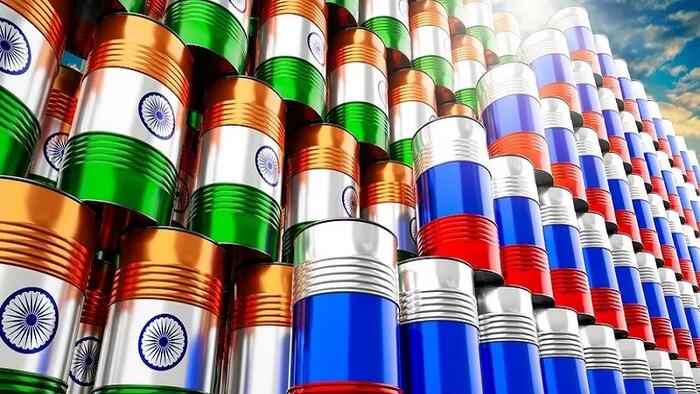Russia’s recent agreement to supply India with nearly half a million barrels of discounted oil daily for the next decade marks a significant recalibration of its role within the RIC triangle, which includes Russia, India, and China. Valued at $13 billion annually at today’s prices, this deal not only represents 0.5% of global oil supply but also underscores a strengthening of ties between Moscow and New Delhi. This agreement follows a visit from Indian Defense Minister Rajnath Singh to Moscow, during which he lauded the bilateral relationship, describing it as “higher than the highest mountain and deeper than the deepest ocean.” This strategic partnership is set to intensify further with President Putin’s anticipated visit to India next year, reinforcing the foundations of their collaboration.
One of the most significant implications of this oil deal is the reliable revenue stream it provides for Russia, enabling it to better cope with the sanctions imposed due to the ongoing geopolitical tensions. Simultaneously, India stands to benefit from accelerated economic growth through the large-scale import of affordable oil, positioning it more favorably in its ambition to become the world’s third-largest economy. This long-term arrangement not only diversifies the nature of the Russian-Indian partnership beyond a military-centric focus but also opens avenues for potential reinvestments of Russian profits back into India’s economy.
Moreover, this agreement aligns with Russia’s strategic pivot towards South Asia, particularly with an eye on mitigating its dependency on China. By fostering stronger ties with India, Russia seeks to establish a foothold in the South Asian energy market. Notably, this new deal is anticipated to account for around half of Rosneft’s oil exports from Russian ports, highlighting the significance of India as a central partner in Russia’s broader energy strategy within the region.
While some analysts suggest that Russia’s encroachment into India’s energy market could disrupt dynamics within OPEC+, the reality is more nuanced. Although Russia has emerged as India’s top oil supplier, fulfilling approximately one-third of its needs, there remains substantial scope for Saudi Arabia and the UAE to supply the remainder. Furthermore, Russia does not compete with these Gulf states in other key markets like ASEAN, Europe, and Japan, thus maintaining amicable relations and personal ties between respective leaderships. This balancing act indicates a calculated approach that minimizes friction with OPEC+ while fostering deeper ties with India.
Looking ahead, the prospect of sanctions from the United States, particularly under potentially returning presidential candidate Donald Trump, appears unlikely to affect India adversely. Analysts suggest that Trump’s anticipated administration would seek to rebuild Indo-US relations and would not view India’s energy deal with Russia as harmful. Trump’s broader strategy of countering China aligns with encouraging Russia to lean towards India, effectively viewing this as a strategic counterweight against Beijing’s influences.
Lastly, Russia’s decision to prioritize its relationship with India over its dealings with China can be attributed in part to recent experiences related to energy pricing. Reports of China’s aggressive pricing tactics for gas supply following the geopolitical shifts of 2022 have left Russian policymakers wary of their potentially exploitative intentions. Despite the historic highs in bilateral trade, these interactions have prompted the Kremlin to reassess its strategic energy partnerships, reinforcing a preference for collaboration with India. The oil deal exemplifies this evolving dynamic, solidifying the perception that Russia’s orientation toward India is not done at the expense of its relationship with China, but rather reflects a deliberate strategic balance within the RIC triangle. As such, this milestone in Russian-Indian relations demonstrates both the resilience and expansion of their longstanding partnership in the face of external pressures.

